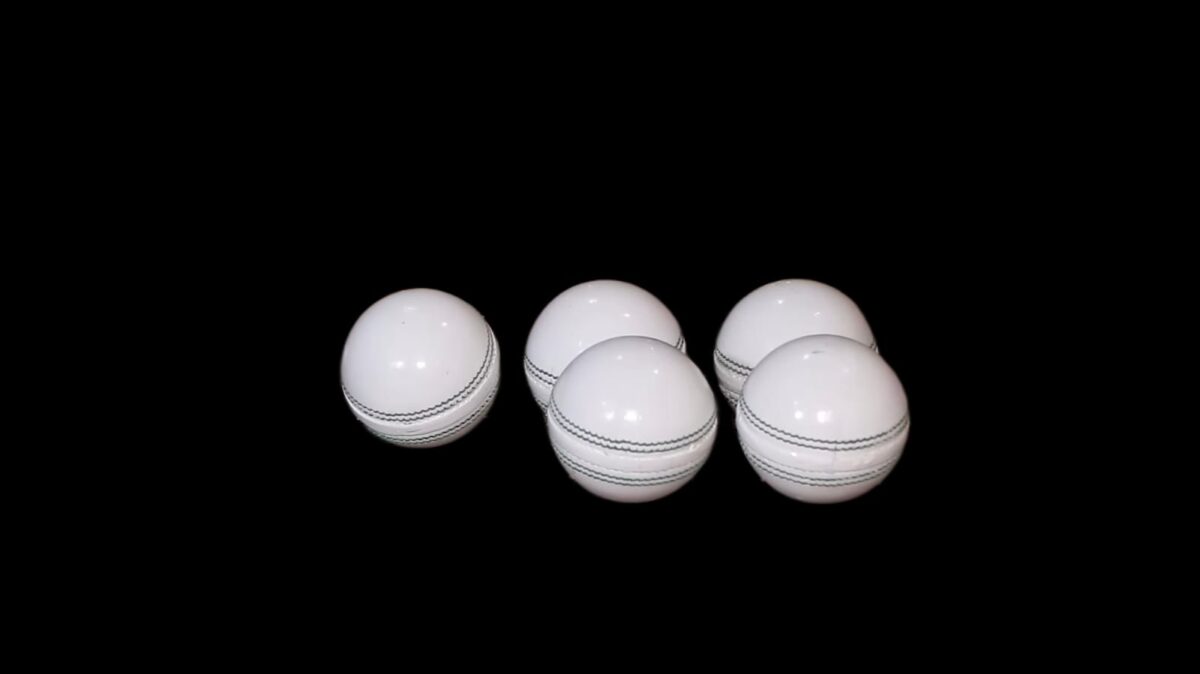If you thought cricket was all about patient days spent in the sun, pristine white uniforms, and a leisurely red ball, you’re in for a thrilling surprise. Welcome to the dynamic, unpredictable, and utterly captivating world of international matches plays with white ball.
Table of Contents
What is White Ball Cricket?
- Stepping Away from Tradition: It refers to limited-overs versions of the game, as opposed to the multi-day Test format.
- Key Formats:
- One-Day Internationals (ODIs) or limited overs cricket: The classic white-ball format with 50 overs per side also known as one day cricket.
- Twenty20 (T20): A supercharged version with just 20 overs per side, emphasizing explosive batting and rapid-fire action.

Why White? The Science Behind the Shine
- Seeing Clearly: This ball is all about visibility, especially in day-night matches where a red ball would be lost under floodlights.
- The Swing Factor: It tends to swing more in the air due to their extra polish, posing an early-overs challenge to batters.
- Changing with the Game: Unlike the sturdier red ball, white balls deteriorate faster, impacting the balance between batters and bowlers as the match progresses.
The White Ball Revolution: A Game Changer
- Batsmen Unleashed: Limited overs and the swing-friendly white ball give big-hitting batters the perfect platform to dominate.
- Strategy Evolves: Captains and bowlers need innovative tactics, clever field placements, and specialized bowlers for the end of the innings to succeed in white ball cricket.
- Let’s Go Global: White ball is shorter, more action-packed format has brought a whole new audience to the sport.
Red Ball vs. White Ball: Not Just a Color Change
| Feature | Test Cricket | (ODIs & T20s) |
| Purpose | Traditional, long-form game | Limited overs, fast-paced |
| Duration | Up to 5 days | A single day |
| Ball Color | Traditional Red | White |
| Clothing | Primarily whites | Colored uniforms |
The White Ball Enigma: More Than Meets the Eye
- Night Vision: White balls were born from necessity. Under floodlights, the red ball vanished. White offered supreme visibility for players and spectators alike, especially in day night matches.
- Swing Thing: Expert bowlers will tell you that this balls swing more than their red counterparts, especially in the early overs of a match. The extra coat of polish to maintain that white gleam contributes to greater aerodynamic instability.
- Built to Break: These balls scuff up and deteriorate faster than red balls. This means the balance of power between batters and bowlers can shift dramatically throughout a white ball innings.
How It Changed the Game?
Formats like One-Day Internationals (ODIs) and the adrenaline-packed Twenty20s (T20s) revolutionized the game:
- Batsmen’s Paradise: Limits on overs mean batters have to unleash their big-hitting prowess from the get-go. The ball, with its tendency to swing, further favours attacking shots.
- Tactics Takeover: Bowlers and captains have had to rethink their entire approach. Variations in deliveries, clever field placements, and the use of “death bowlers” at the end of an inning are all hallmarks born from this.
- A Global Spectacle: Cricket’s shorter format, high-scoring action, and suitability for night matches propelled game’s popularity, bringing in new fans worldwide.
Some Surprising Secrets
- Pink Cricket Ball: For day-night Test matches, the pink ball offers a compromise between the visibility of white and the durability of red.
- Clothing Chaos: Early white ball formats insisted on coloured clothing. This was later relaxed except for some tournaments, where the white ball might clash with specific outfit colours.
- History in the Making: The first-ever ODI was played in 1971 after a Test match was washed out. It was an experiment that changed the course of history!
The Future is Bright (and White!)
If you haven’t yet, tune into a white ball match and prepare to be blown away by the sheer audacity of the players, the nail-biting finishes, and the unpredictable spectacle.
Conclusion:
White balls offer a thrilling alternative to traditional red cricket balls. Its speed, unpredictability, and emphasis on attacking play have reinvigorated the sport for a modern era.
Is the traditional format under threat? Can shorter format maintain its meteoric rise? What surprises does the future hold? Share your thoughts below!
James Paul is a former first-class cricketer and passionate cricket analyst. His decades of experience on the field and his love for the game shape his insights into the strategies and personalities that define world-class cricket.
